slcc
Rebounding after the Pandemic Growth came in unexpected ways for students and graduates.


Rebounding after the Pandemic Growth came in unexpected ways for students and graduates.


SLCC Dance Company performs in preparation for a concert, as seen in this long-exposure image.
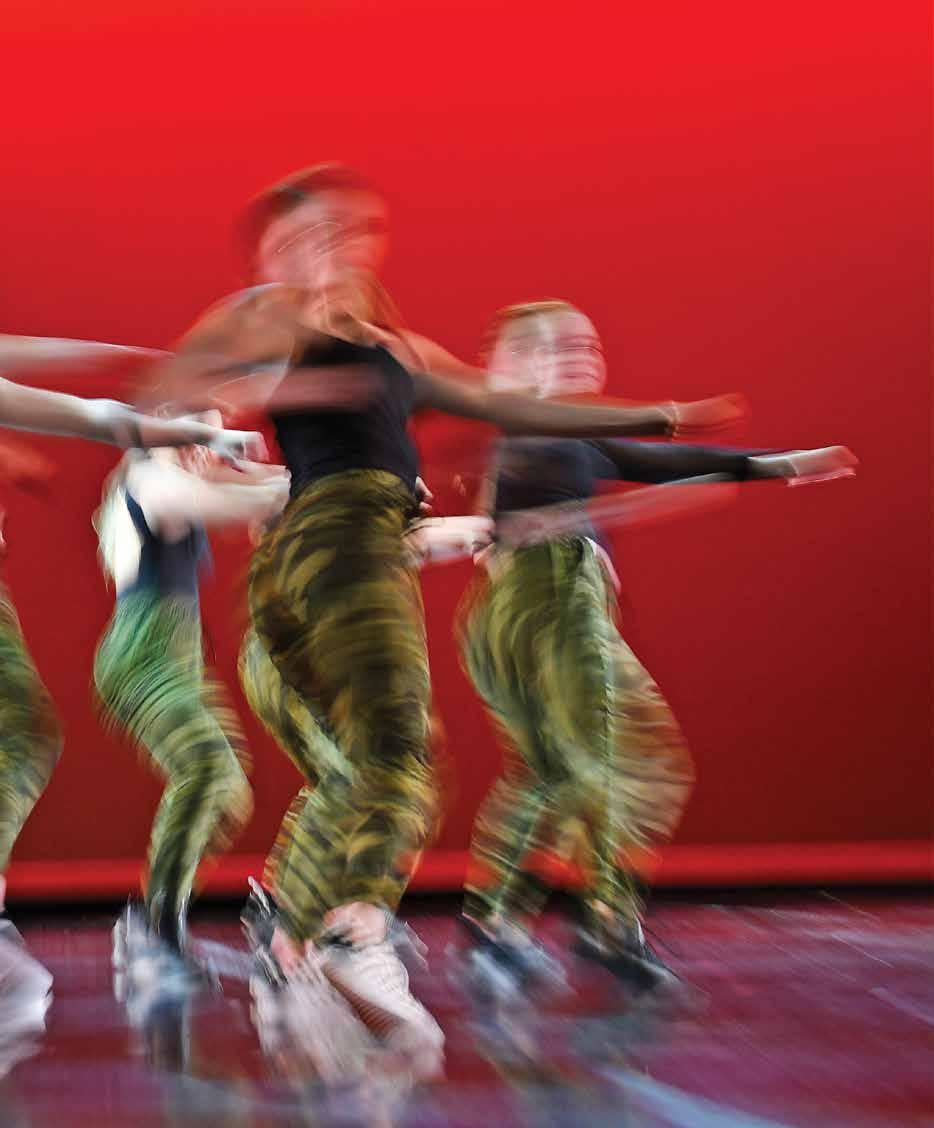

After job loss and setbacks during the coronavirus pandemic, students find new paths to success at SLCC. Inspire

Words of wisdom and future plans from the college's top graduates.
There are many types of heroes. SLCC grants honorary doctorate degrees to those who are dignified, selfless and give of their time, talents and resources to better the lives of others.
At the top of his career, Timothy S. Huval learned one of life's greatest lessons from surviving a personal health challenge.

Rick Bouillon

Dr. Kathryn Coquemont
John Fackler
Anjali Pai
Dr. Jason Pickavance
In good times and bad, education is key to economic prosperity and the long-term health and security of individuals, families and communities. The coronavirus pandemic reenergized SLCC’s commitment to focus and build on our strengths, to keep struggling students afloat and to help them succeed through new teaching methods and technologies.
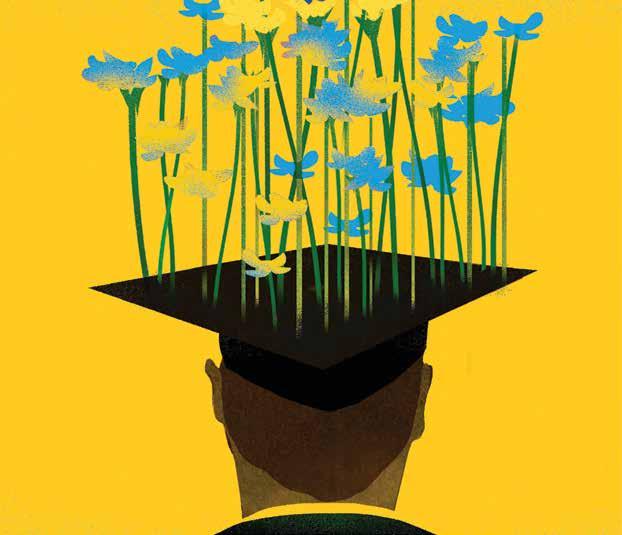
Adapting instruction and training to meet immediate needs is critical to helping students. As an open-access college, we’ve always done this and remain nimble to best serve our communities. In times of crisis, partnering with state agencies, other organizations and schools is vital to rapid recovery. Pooling resources and efforts helps all succeed together more quickly than if we strive alone.
As the pandemic winds down, SLCC will continue to prepare students to transfer to four-year schools and
for careers in high-demand, skilled jobs to meet the needs of Utah’s expanding and diverse workforce. An infusion of millions of dollars in pandemic-related aid helped economically challenged students enroll in key programs and trainings, and to learn new skills to recover from economic and employment losses.
We invite you to read on p. 17 about SLCC’s efforts and our students’ successes during the coronavirus pandemic. They represent only a few anecdotes and stories of the thousands more to come. We will celebrate these successes in person Aug. 6 as we gather at the Maverik Center for Commencement 2021. Join us in this longawaited celebration of unity (see p. 21).
DB Troester SLCC Magazine Managing Editor david.troester@slcc.eduDeneece G. Huftalin, PhD (arms raised), with students, staff and members of the Huval family, open the Tim and Brenda Huval Student Center on the college’s Jordan Campus.
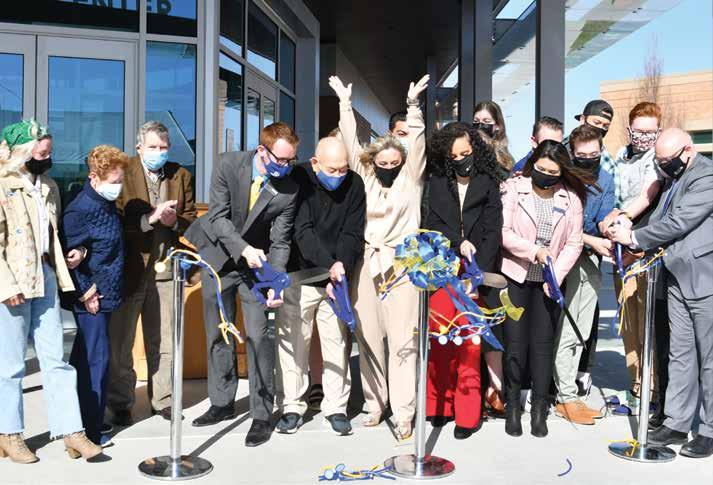
The new 41,000-square-foot Tim and Brenda Huval Student Center opened in the spring at the Jordan Campus, providing full services to students and promoting a sense of community.
The center replaces a smaller, limited facility and offers a bookstore, food services, Center for Health and Counseling, a Bruin Pantry branch, fitness center, study areas, lactation room, a meditation room, event space and a lounge. It hosts a Veterans Center, International Student Affairs, Office of
Diversity and Multicultural Affairs, Disability Resource Center and other services, including a child care facility.
The $17 million center will eventually serve about 5,000 students at Jordan Campus. It was funded by student fees and named for philanthropists and SLCC boosters Tim and Brenda Huval, whose significant support of scholarships helps students succeed at SLCC.
You can read more about the Huvals and Tim’s life-threatening challenge on page 30.
A new child care center opened in January at the Jordan Campus, helping meet the needs of SLCC students with children.
Licensed for 50 children, the center is the third child care facility at SLCC, adding to the Eccles Early Childhood Development Lab School at the Taylorsville Redwood Campus and the recently expanded Tim and Brenda Huval Child Care Center at South City Campus.
“We’re here to support our nursing and health sciences students,” says Holly Garcia, director of child care and family services at SLCC. The Jordan Campus center offers flexible time slots. “A parent can sign up for one day a week, instead of four or five days a week,” Garcia says. The center has four classrooms, a kitchen, lactation room and an attached, outdoor playground.
Located in the new Tim and Brenda Huval Student Center, the child care facility accepts infants to 12-year-olds. For more information, call 801-957-3070.
SLCC PresidentConstruction of a $57 million building will begin in July at SLCC’s planned 90-acre Juniper Canyon Campus. The facility will allow students to earn associate’s degrees at SLCC and continue seamlessly at the site to earn baccalaureate degrees from the University of Utah.
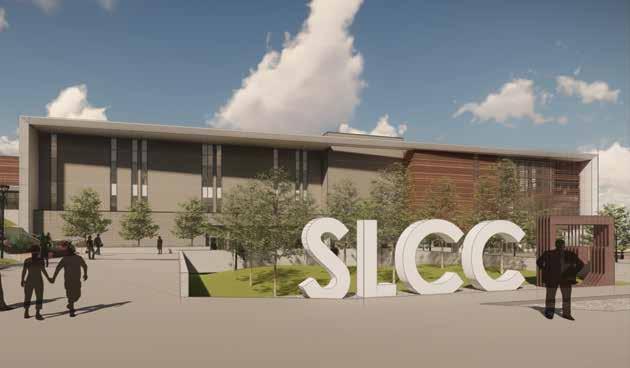
The building is the first at the Herriman campus and will provide a full range of services, including admissions, advising, tutoring and transfer support for both schools. Programs offered will include nursing, information systems, computer science, software engineering and teacher training. Students will be able to complete degrees in four years while saving as much as $11,000 in tuition. The partnership between SLCC and U of U will help fill thousands of jobs projected to be created in the next two decades.
"We are very proud of this project," says Tim Sheehan, SLCC vice president of Government and Community Relations. "I'm not aware of another campus like it."
The Utah Legislature in February allocated $32.7 million in state funding for the building.
SLCC, the U of U, individual donors and Herriman City added funding support. SLCC has been offering classes at the former Herriman City Hall since 2018.
"Colors and materials for the new building will reflect the surrounding environment and incorporate renewable energy forms into the central utility system," says Bob Askerlund, SLCC associate vice president of Facilities. A groundbreaking ceremony is scheduled for July 15, 2021. Construction is an-ticipated to be complete in 2023 and the campus open for classes and services that fall.
Salt Lake Valley's southwest quadrant has higher than average high school completion rates but lower than average higher education attainment. Having a campus in Herriman makes education more accessible for students in that region, where the population is expected to double by 2045. Opening enrollment is projected at 2,125 students and estimated to increase to 6,750 students by 2025. The site provides room to expand with population growth.
A new outreach program offered at SLCC’s Miller Campus seeks to help veterans, military members and their spouses start and succeed in business.
The Veterans Business Resource Center in partnership with the Utah Department of Veterans and Military Affairs is offering the outreach program. The resource center works with clients to test business ideas and to create a legal company. It also provides financial analysis and helps entrepreneurs develop business and marketing plans.
“There is no charge for these services because veteran and military members have already done so much for Utah through their military service," says Program Manager Rick Brown. Services are offered via videoconferencing.
For more information, call 801-957-5288 or online visit themillatslcc.com/ departments/vbrc.
The new Herriman Building will accommodate growth in the southwest part of the Salt Lake Valley, offering both associate's and bachelor's degrees to students.
Salt Lake Community College received a $1 million National Science Foundation grant to provide scholarships for low-income, academically talented STEM (Science, Technology, Engineering and Math) students.
Over the next five years, the funding will provide 56 incoming STEM students with up to $10,700 each for two years, helping with tuition, books and fees. It will also be available for 35 “near completer” students, providing one semester of support for those close to finishing their STEM degrees. The grant will help improve retention and completion rates of students in STEM programs at SLCC as well as support those who choose to transfer to four-year schools.
“The award is directly aligned with the college’s goal of providing equitable access to higher education,” says Craig Caldwell, dean of SLCC's School of Science, Mathematics and Engineering.
The partnership between SLCC and U of U will help fill thousands of jobs projected to be created in the next two decades.
 PHOTO COURTESY OF NJCAA
Men’s soccer team wins NJCAA Division 1 title
PHOTO COURTESY OF NJCAA
Men’s soccer team wins NJCAA Division 1 title
They did it!
After a rigorous season, the SLCC men’s soccer team won the national championship in only its fifth year since the program started.
Head Coach Mark Davis, along with assistants Cassie Ulrich, Ty O’Connor and trainer Kenlynn Carter, led the 2021 crop of players to national supremacy during the NJCAA national tournament in Kansas. In a 2-1 overtime match June 10, the team won the championship game over No. 1 Iowa Western.


For a relatively young program, ending the season as the No. 2 soccer team nationwide was a huge accomplishment for Salt Lake Community College women’s soccer. The burgeoning program was formed five years ago, with the men’s team. Both are led by Coach Mark Davis.

Players have come and gone, but the 2021 group was something special. This season’s women’s team fought hard during its June tournament in Evans, Georgia, earning a spot in the NJCAA title match against No. 1 Tyler Junior College from Texas. SLCC fell 2-0 to
Tyler, ending the season with a 15-2-1 record and the NJCAA Western District title.
“I’m proud of our entire program for what we’ve done here,” says Coach Davis.
SLCC President Deneece G. Huftalin traveled to Georgia to watch the team, cheering athletes through four games that included rain and lightning delays, two overtime matches and many nerve-racking penalty kicks. “They are champions in my mind—champions of spirit, champions of SLCC, champions of hard work and champions of the concept of team,” Huftalin says. “I am so proud of them.”
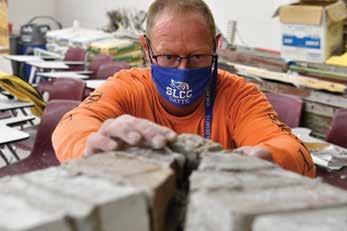

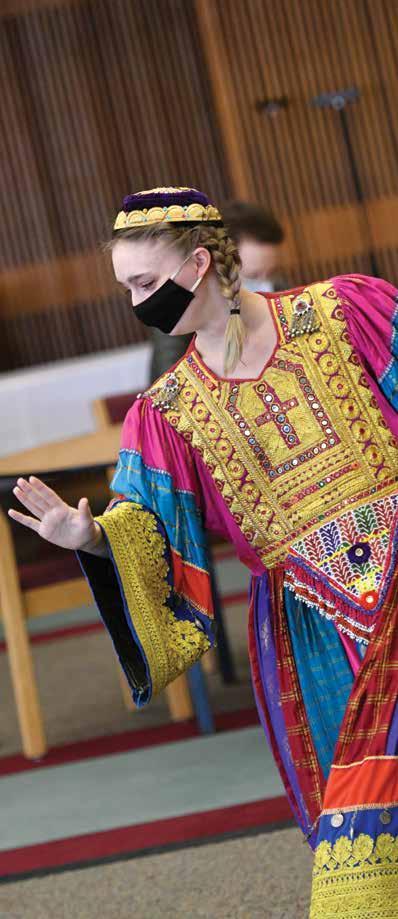 Top left, clockwise: Student Colin Dunlop in Advanced Bricklaying keeps his course of bricks level.
SLCC student Abigail Smith-Hubbard, with Salt Lake City Ballet, dances in the annual Newroz event, celebrating the Persian new year.
SLCC alumnus Agustin Bautista Silva painted this triptych mural, representing the Latinx migration.
Exercise science majors Jefferson Brewer, left, and Jenny Gordon demonstrate the BodPod to assess body composition for health and performance.
Top left, clockwise: Student Colin Dunlop in Advanced Bricklaying keeps his course of bricks level.
SLCC student Abigail Smith-Hubbard, with Salt Lake City Ballet, dances in the annual Newroz event, celebrating the Persian new year.
SLCC alumnus Agustin Bautista Silva painted this triptych mural, representing the Latinx migration.
Exercise science majors Jefferson Brewer, left, and Jenny Gordon demonstrate the BodPod to assess body composition for health and performance.
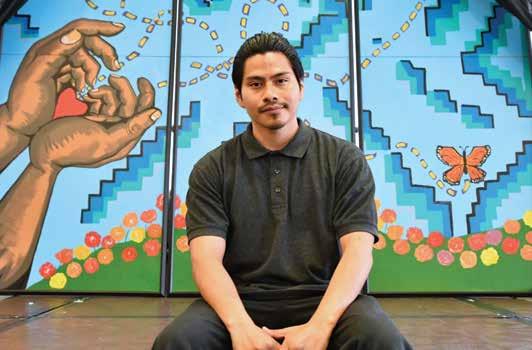


Revamped ATC to open in 2022
A partial rebuild of the Applied Technology Center at the Taylorsville Redwood Campus is underway following a fire last summer during renovation. The rebuilt facility is set to open for the fall semester in 2022. “The building will be rebuilt to what it was prior to the fire with minimal changes,” says Frank Baker, SLCC project manager.
Following a determination by the state insurance adjuster that a partial rebuild would be more cost effective than a new building, construction plans were put in place that adhered to the original footprint and architectural design. New construction is being blended with the east side of the building, which remained intact. The completed 39,000-square-foot building will house SLCC’s construction trades programs and classes temporarily relocated due to the fire.
The State of Utah Risk Management Fund paid $1.49 million in insurance for demolition. Total construction costs and the replacement of lost contents will be determined by the college and insurance fund managers as the project moves forward.
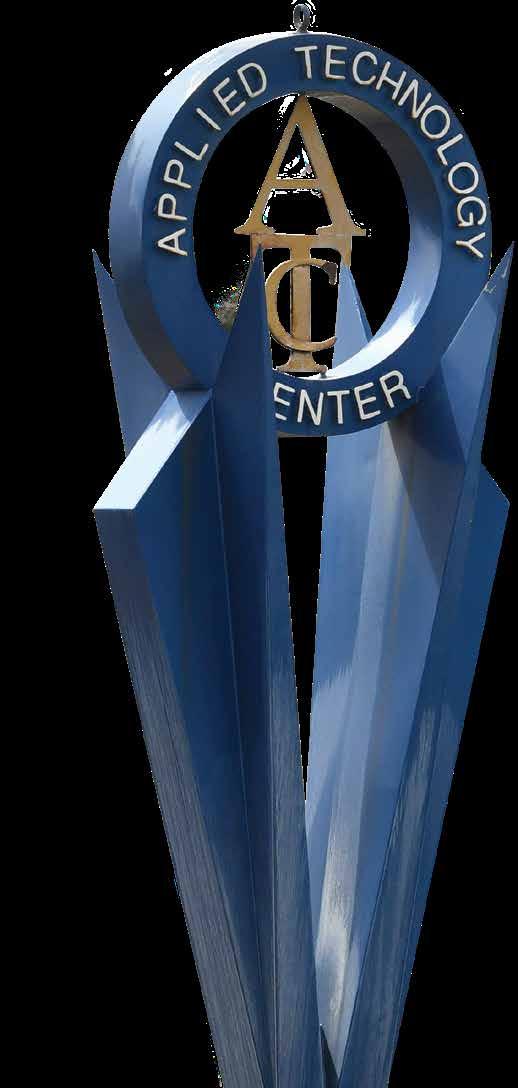

Surgical Tech grads in high demand
Ten years ago, Bridget Loggins’ life was a bit different: married, one child and a job as a certified nursing assistant. Today, the 35-yearold has two more children and her career interests have changed. In 2020, she graduated from Salt Lake Community College’s surgical technologist program, passed her national board exam and went to work part time at the University of Utah Hospital.
The surgical technologist program prepared her to work in operating rooms. “I like knowing what the surgeon needs,” says Loggins. “It feels good to be part of a team taking care of someone.”
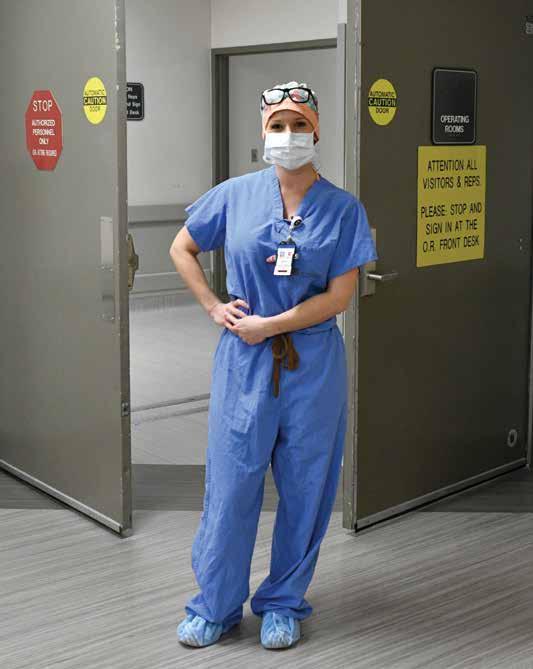
The road to becoming a surgical technologist at SLCC takes less than a year and with early enrollment, students can begin while in high school. Surgical techs work in hospitals, private practices and surgical clinics under the supervision of registered nurses to create a “sterile field” for surgeries while passing instruments to doctors during operations.
“There are placement opportunities for any surgical tech student who wants a job in Utah,” says SLCC Assistant Professor of Surgical Technology Jana Mitchell. About 1,100 surgical techs work in the state, according to the U.S. Bureau of Labor Statistics. As of last year, there were an estimated 400 openings for new techs in Utah, according to Utah Department of Workforce Services. The field is projected to grow 7% nationally through 2029.
The surgical tech program at SLCC will continue to expand, says Mitchell, possibly adding an associate’s degree track. The traditional 10-month program saw an increase from 21 applicants in 2019 to 31 in 2020, and early enrollment rose too. For spring 2021, the college had 14 students enrolled in the traditional program and 14 more in the early enrollment track.
Emily Johnson, 27, worked at a preschool and enrolled in the surgical tech program for a new career. She found help caring for her young daughter and, even though she is high risk if she contracts COVID-19, continued her schooling during the pandemic. “I’m really glad I did. I felt our instructors cared about our education. They wanted to see us succeed.” She graduated in 2020 and now works as a surgical tech in operating rooms at the University of Utah Hospital.
Surgical Technology
DURATION
10 months
COST
$5,000
AVERAGE BASE SALARY
$45,500 (U.S. Bureau of Labor of Statistics)
Braden Roundy hopes to open his own restaurant. So does Steffan Joensen. Eve Jones, whose family owns The Green Pig Pub and Grill, would like to manage it someday.

Despite a service-sector shakeout that shuttered restaurants locally and nationwide due to COVID-19, these students seek an industry edge by studying in the Culinary Institute at Salt Lake Community College. They are among more than 100 students training at the institute for an industry rebound after the pandemic.
“I think it’s amazing to see how resilient the industry has been,” says Roundy, 18, who works as a line cook at Chili’s. When the pandemic forced restaurant closures throughout the country in early 2020, Chili’s moved immediately to takeout only and by spring had resumed some indoor dining with social distancing. Roundy, along with most kitchen workers, kept his job, which helps pay for school, he says. He takes a full load of classes and has been able to avoid student loans. Roundy expects to graduate in 2022 with an Associate of Applied Science degree and wants to someday open a bakery and expand it into a family-style restaurant.
According to the National Restaurant Association, Utah has more than 5,200 restaurants
sociate Dean Jeffrey Coker. The industry suffered during the coronavirus pandemic but adapted to survive.
As a chef at a treatment center, Joensen kept his job during the pandemic, cooking every day for about 40 adolescent boys and 20 staff members. The 27-year-old, originally from Denmark’s Faroe Islands, developed a love of cooking early on while working in a summer camp kitchen. “I’d like to learn more technique, terminology and management, to learn how to run a kitchen rather than just cook in it,” he says.

He expects to graduate in December with an Associate of Applied Science degree in culinary arts and wants to open a culture house, a place that combines different culinary experiences from around the world. “I’m not sure if the industry will come roaring back,” he admits. “But I look at the positive side: People do want food and to hang out with each other.”
Jones kept her job, too, as a server at her family’s restaurant but felt fallout from the pandemic. The Green Pig closed for nearly three months in 2020. “It was pretty bad,” she recalls. “Every member of our staff was laid off.” Many kitchen and wait staff were hired back when it reopened, but things haven’t been the same. Jones’ $2.13 an hour server wage has not been enough to make up for losses in tips during the pandemic.
The world is always changing, she says, and restaurants and bars need to adapt to stay relevant. She expects to graduate with an Associate of Applied Science degree in culinary arts in 2022. “I hope some of what I learn at SLCC will help me keep this place on the map in Salt Lake City and keep it a popular destination
PROGRAM
Culinary Arts and Hospitality Management
Two years, or five full-time semesters

COST
Estimated $14,000 AVERAGE BASE
When SLCC’s new library dedicated to racial justice opened at South City Campus, college officials knew whose name should adorn its doorway: Dr. Clifton G. Sanders, SLCC provost.

Officially dubbed The Dr. Clifton G. Sanders Racial Justice and Black Liberation Library, its shelves are filled with texts of the Black experience, social justice, racial justice, Black culture and history, and Black liberation. The space also features inspirational and captivating artwork. All are welcome to check out books.
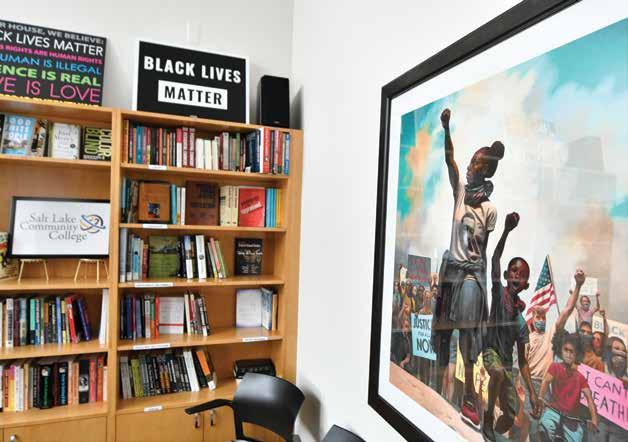
Dr. Sanders hopes the new library will act as a springboard for community building and activism, a sanctuary for renewal, a community gathering space and as an influence beyond its structural confines, fostering racial reconciliation.
His track record on academic research, accomplishment, team building and inclusion made him the perfect choice for whom to name the library. His love of books is a legacy from his grandmother’s generation to his mother, Mary Branch, and to him and his siblings. He describes his mother as an avid reader and longtime champion for children, community, family and the downtrodden.
“I certainly want students of color to gain selfconfidence from the kind of learning that can happen in that space,” says Dr. Sanders. “I want all students to be able to gain understanding, intellectual and cultural, to begin to act toward building real community, empathy and commitment to solidarity around what is good and just.”
Dr. Clifton Sanders has more than 25 years of experience in teaching, administration and leadership in higher education. He received his doctorate in organic chemistry from University of Utah and has served as SLCC provost for academic affairs since 2015. As chief academic officer at SLCC, he oversees instruction and training for about 60,000 students annually. He previously served in several roles at the college, including assistant professor of chemistry, division chair for natural sciences and communication and dean of the School of Science, Mathematics and Engineering. He led the development of several STEM programs and is a collaborator on local, regional and national initiatives on education, diversity and inclusivity and workforce development. His research and scientific work resulted in six patents in biomaterials technology. He is a University of Utah Chemistry Department Distinguished Alumnus and he coauthored a 2009 paper on music and democracy
published in Radical Philosophy Review. Dr. Sanders is also an award-winning jazz saxophonist. Sanders views the new library as a healing space, which is implicit in the notion of reconciliation, where undesirable ideas can be transformed and people on both sides of issues can learn from each other. “I’m totally comfortable with the idea of something bearing my name that can bring different things together for serious conversation and engagement,” he says.
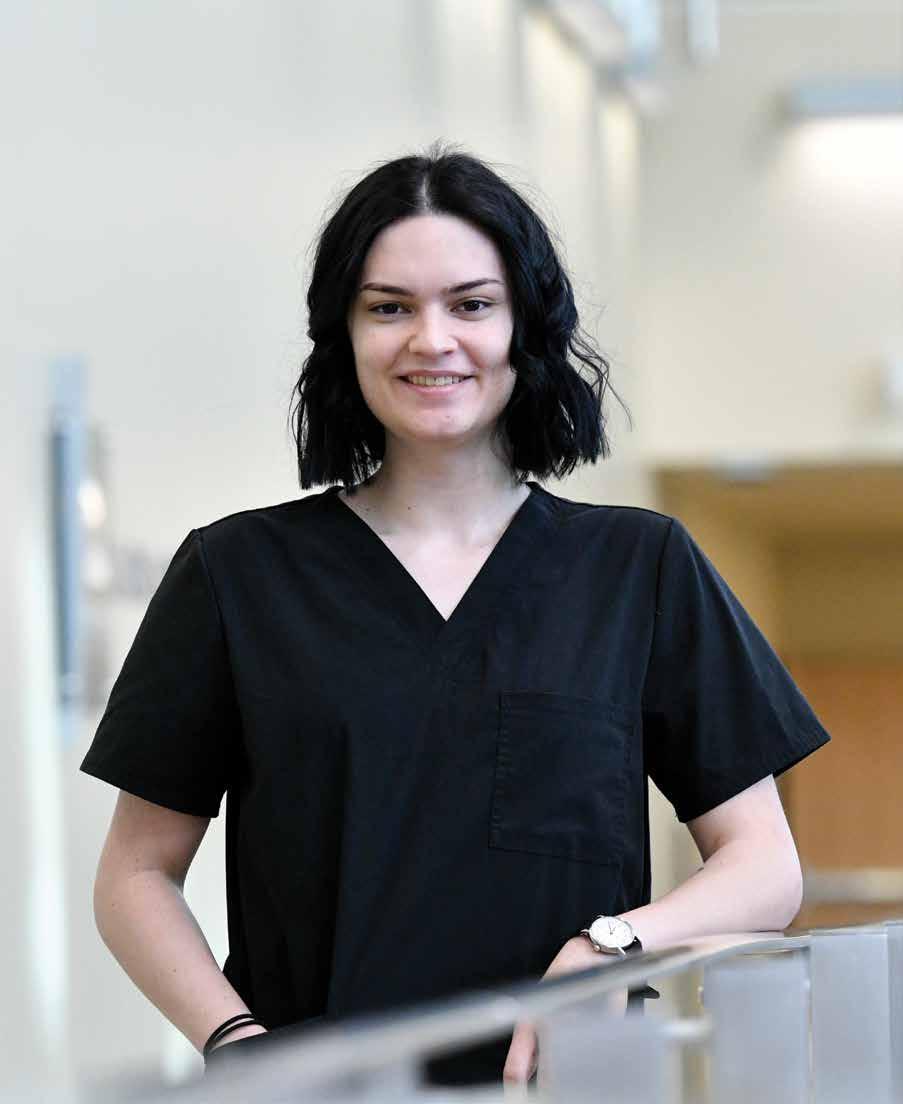
After losing her job during the cornavirous pandemic, Britta Bolander started a new career through SLCC training as a certified nursing assistant. She enjoys her new job and now earns 50% more.
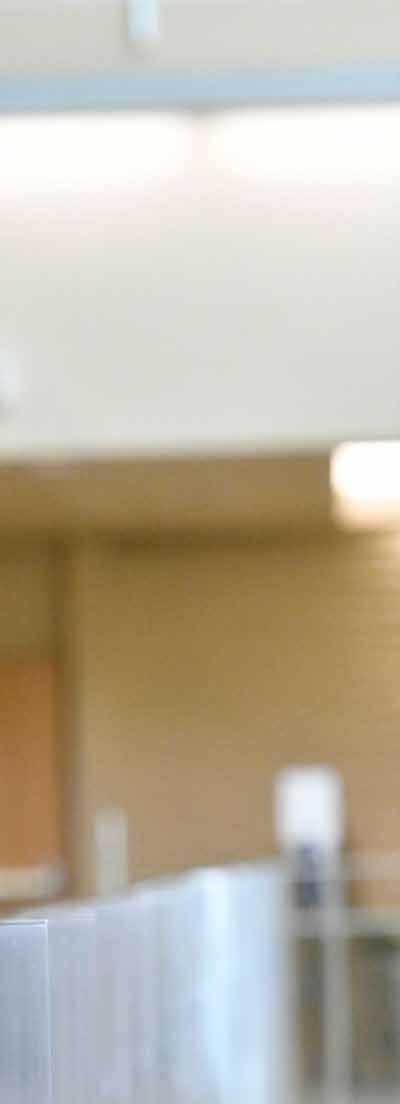
Hassibullah Danish was an architect in his home country of Afghanistan, but since arriving in the U.S. over six years ago, he’s had to rethink his professional path, which meant returning to school. Jumping back in was a challenge, until Danish found the Learn & Work In Utah initiative.
Salt Lake Community College is one of several participating schools and in Round 1 of Learn & Work last fall, the college offered 37 free programs for almost 800 enrollments (some students accounted for multiple enrollments) and spent $1.3 million on equipment and scholarships, helping people like Danish prepare for new careers. Planning for Round 2 continued through spring, with funds for more students available in fall semester.
“It helped me a lot,” says Danish. He works one job as a drafter for a design company that specializes in residential homes, and in his limited spare time as a driver for Uber and Lyft. When he arrives at his West Jordan home after work, his wife leaves their three children in his care and goes to her night job. He learned through a Facebook ad about Learn & Work and that SLCC offered a free architecture class he needed. It ended up being a perfect fit with his busy schedule. “I learned about the most powerful software for architects,” he says. Danish is now considering a path toward construction management, which comes with a significant increase in salary.
Some of the more popular programs among three dozen offered through Learn & Work at SLCC are professional truck driving, EMT, web development and law enforcement, says Rick Bouillon, associate vice president for Workforce & Economic Development at SLCC. The programs match the widely varying needs of the Salt Lake Valley’s diverse economy. “That’s why
we provide a variety of training. The need is so great,” Bouillon says. “It was a hand up, not a handout.”
One of the hundreds of students who took advantage of that hand up was Riverton resident Britta Bolander, 21. She had been making $10 an hour working retail when the pandemic shut everything down and she lost her job in April 2020. She heard about Learn & Work just as her unemployment aid was running out and enrolled in SLCC’s Certified Nursing Assistant program. It allowed her to pursue a lifelong ambition of working in the medical industry.
She started at SLCC in November and finished in February, passing the state certification requirements before being hired by the University of Utah Hospital. Had it not been for Learn & Work, she would have struggled or gone into debt to cover the $521 program cost.
“Being able to do it for free was super helpful,” she says. Now she’s making $15 an hour to start, loves her job taking vital signs and caring for patients, and there is opportunity for growth and
Additional programs to help students succeed
Salt Lake Community College employs several methods for getting students in and out of training programs quickly and into the workforce at little or no cost or to simply help them deal with bills in emergency situations so they can afford to complete their education. For more information on any of these programs, call 801-957-7522.
This ongoing program at SLCC offers free short-term training and courses for those seeking to work locally for advanced manufacturing companies that use innovative technologies to manufacture aerospace, defense, medical device and transportation products. Funded by the state, the program provides training in composites and assembly for aerospace and defense; injection molding for the medical device industry; and mechanical/electrical assembly for commuter rail manufacturing.
SLCC created a crisis fund to provide compassionate assistance to students in an emergency or who face serious financial disruptions. Funds are used to assist with rent, childcare, loss of income, technology to accommodate working and learning from home, as well as any other critical issues students may face. The college’s goal is to alleviate some of the anxiety students are experiencing during the COVID- 19 pandemic and minimize disruptions to their academic progress.
furthering her education at a reduced rate by working at the U of U. “It’s a lot better than flipping burgers or making drinks at Starbucks,” she says. Bolander’s next step, she adds, might be to pursue a bachelor’s degree in nursing.
“The intention of Learn & Work funding from the state is to make sure students have the opportunity to gain access to the program of their choice and to be able to make those offerings at no cost,” Bouillon says. “We saw students come into programs who had their employment reduced or eliminated. These were opportunities for them to redirect their careers and hopefully get back to solid footing moving forward.”
Jesse David “JD” VanWay, 35, is moving forward to gain a new skillset in the EMT field, thanks to Learn & Work. He lost his job as an IT project manager in the transportation industry during the pandemic and hopes to become an IT specialist in a medical field. “I got the call, and they said, ‘There’s no easy way to say this, but we’ve got to make cuts.’” Unemployment assistance held out for most of last year. He enrolled in SLCC’s EMT program in fall 2020 and completed it in May 2021.
Despite part-time IT work and a renter helping pay the mortgage on his home, he is just scraping by and is grateful for Learn & Work. “Without that funding, there’s absolutely no way,” he says about being able to afford the $1,480 tuition. “For me it was about expanding my skill set, and I like being able to learn and grow every chance I get.”
The college has a number of short-term training programs and courses for those looking to quickly increase their skills or switch careers. These programs are specifically designed to help unemployed and under-employed Utahns quickly train for current high-demand jobs. Scholarships are available to offset the cost of tuition, and these programs involve sometimes only a few days to a few weeks of training.
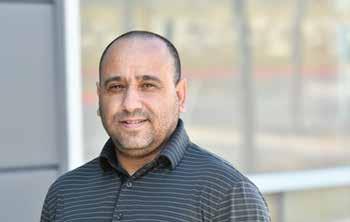
The college received millions of dollars from the Coronavirus Aid, Relief and Economic Security Act. About half went toward emergency financial aid grants to students, who received 7,712 awards by October 2020. Multiple pieces of legislation funneled aid to eligible students to pay for education-related expenses incurred due to COVID-19. Funding also went to help faculty transition to remote learning through investments in technology; creating hot spots for students without internet service; specialized welding helmets, each with a built-in breathing apparatus; and software for instructors to capture or stream classes for those not able to attend in person.
LEARN & WORK IN UTAH
Helps unemployed, underemployed and vulnerable workers get new skills and reenter the workforce in the fallout of the coronavirus pandemic. Supported by the Utah Governor’s Office of Economic Development, Talent Ready Utah and the Utah System of Higher Education. For more information, visit inutah.org/learn-work or telephone SLCC at 801-957-7522.
Hassibullah Danish, left, learned vital architectural training and JD VanWay, right, completed SLCC's EMT program. Both received the training for free through one of many recovery programs.
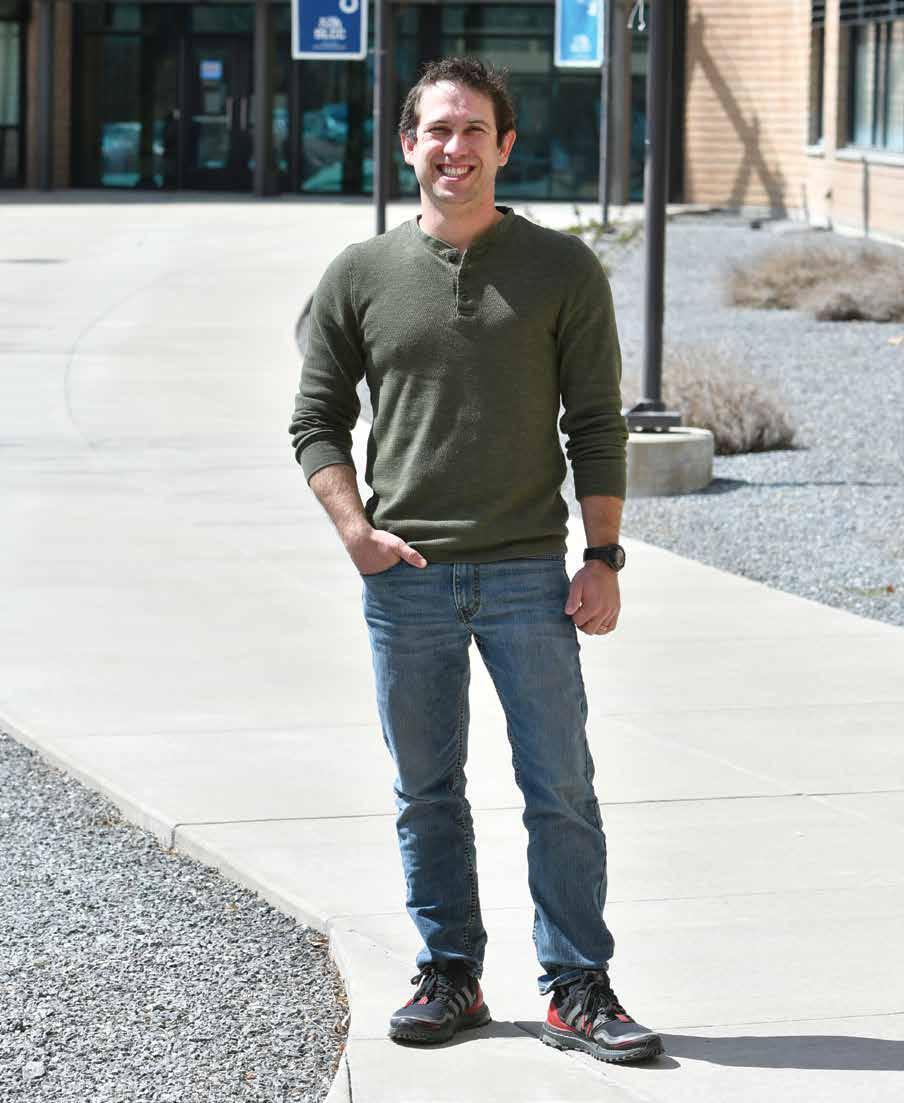

For the first time in over two years, Salt Lake Community College students, their families and friends will meet in person in West Valley City’s Maverik Center at Commencement 2021. The Aug. 6 ceremony will include graduates from 2020 and 2021 walking on stage to receive degrees and certificates, celebrating achievement and success. The last time Commencement was held in person was in May 2019. Graduates in 2020 did not get the opportunity to walk because Commencement was held online due to

COVID-19. And this year’s traditional May ceremony was postponed until the August event.
We look forward to this gathering of SLCC graduates and their families and friends. Many graduates will move on to further their educations and others will enter the workforce for promising careers. The easing of pandemic restrictions with improved general health in the state and nationwide has made this event possible. For more information about Commencement 2021, visit slcc.edu/commencement.
This distinction recognizes hard work, commitment and selflessness. One student is selected from each school of the college and General Studies. These students have excellent GPAs and typically receive scholarships and awards for academic achievements. They have demonstrated leadership skills and a dedication toward serving others, in addition to other notable achievements related to the creative arts, athletic excellence or involvement in SLCC beyond the classroom.
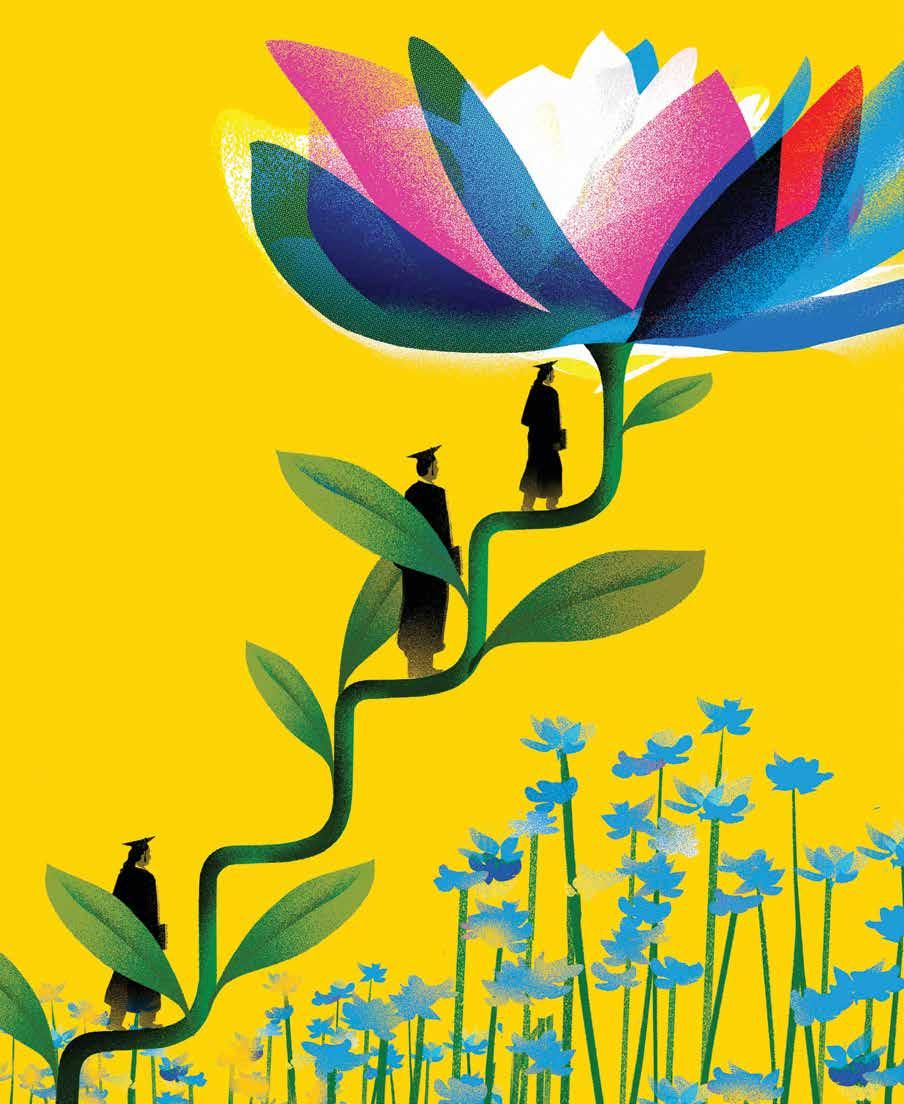 Manisha Adhikari
Manisha Adhikari
School of Health Sciences
Nursing major
GPA: 3.56
Plans: Passing national exam for licensure as a registered nurse, working in the surgical unit of a hospital and possibly later in a labor and delivery unit and completing her bachelor’s degree in nursing at the University of Utah.
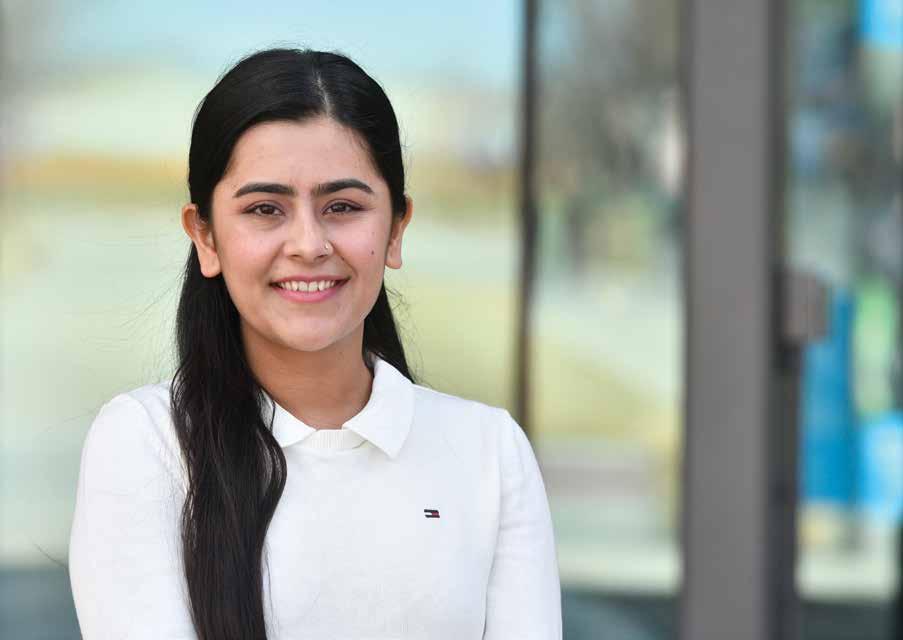
“Fate brought me and my family to Utah. I came to the USA with an American dream of building a good life for myself and my family while also making them proud.”Samuel Aguirre
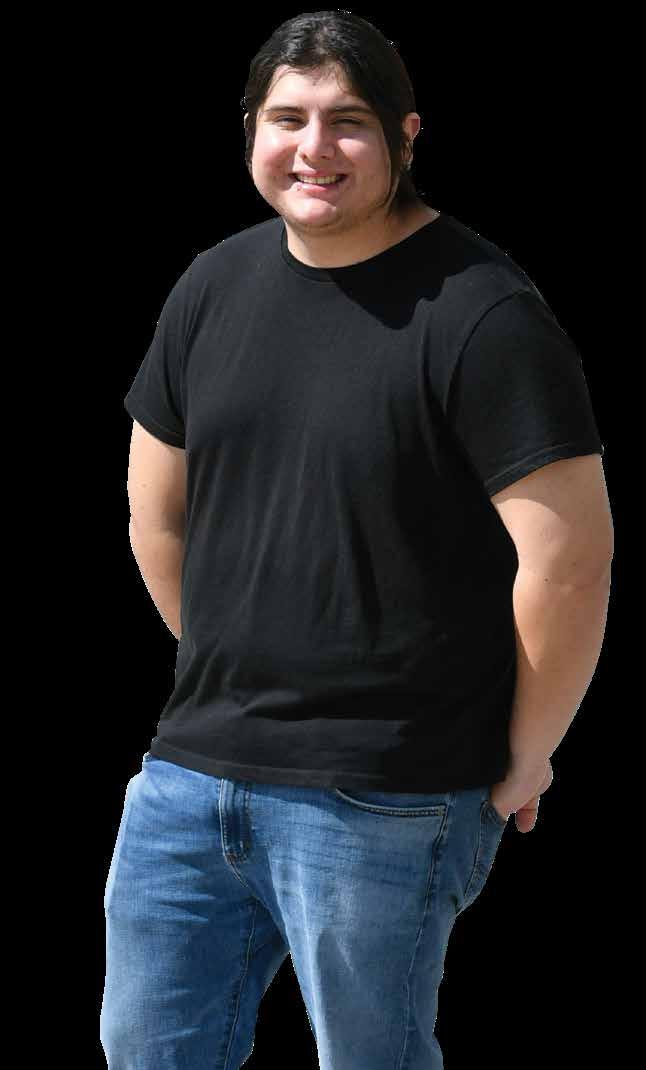 School of Business
School of Business
Business major
GPA: 3.78
Plans: Admitted to the Huntsman School of Business and will attend Utah State University, double majoring in business and business management and hoping to someday work in international logistics.
“Most people like a good comeback story, and there is no better setting for one in Utah than at SLCC.”
General Studies major
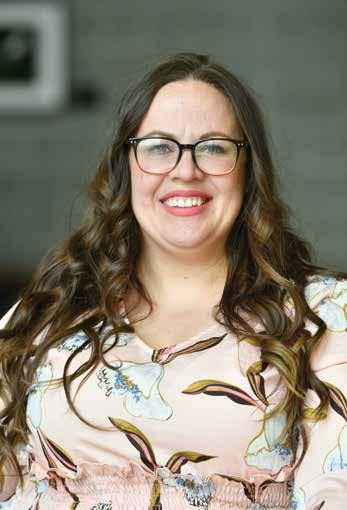
GPA: 4.0
Plans: Transferring to the University of Utah or Brigham Young University and completing a physician’s assistant program.

School of Science, Mathematics & Engineering
Mathematics major
GPA: 3.86
Plans: Transferred to the University of Utah, pursuing a bachelor’s degree in mathematics and ultimately a PhD in that subject.
“My professors taught me how to love and respect myself, they showed me I was smart and worthy of the hard work it took to get through classes.”
“I believe quality education is a fundamental right of every human being in the 21st century.”
School of Applied Technology and Technical Specialties
Criminal Justice major
GPA: 3.92
Plans: Continuing employment with Odyssey House of Utah and using her education to create improvements within the medical, homeless and corrections settings.


“I feel that true academic excellence is not only the grades you work hard for but also the knowledge you spread to the world.”

School of Humanities and Social Sciences
Social Work major
GPA: 4.00
Plans: Transferring to the University of Utah, earning a PhD and developing a substance abuse program to help those suffering from addiction.
“By putting our interests aside and working together, we can make a better sociopolitical tomorrow, for both our lives and the coming future generations.”
School of Arts, Communication and Media Journalism and Digital Media major GPA: 3.80

 Amie Schaeffer
Amie Schaeffer
“I have been editor in chief [at The Globe] since spring 2020. … My position with the paper has afforded me great opportunity and it is a role I will always keep close to my heart.”
58.4%
3,634
Total Graduates
367 143 487
2,331
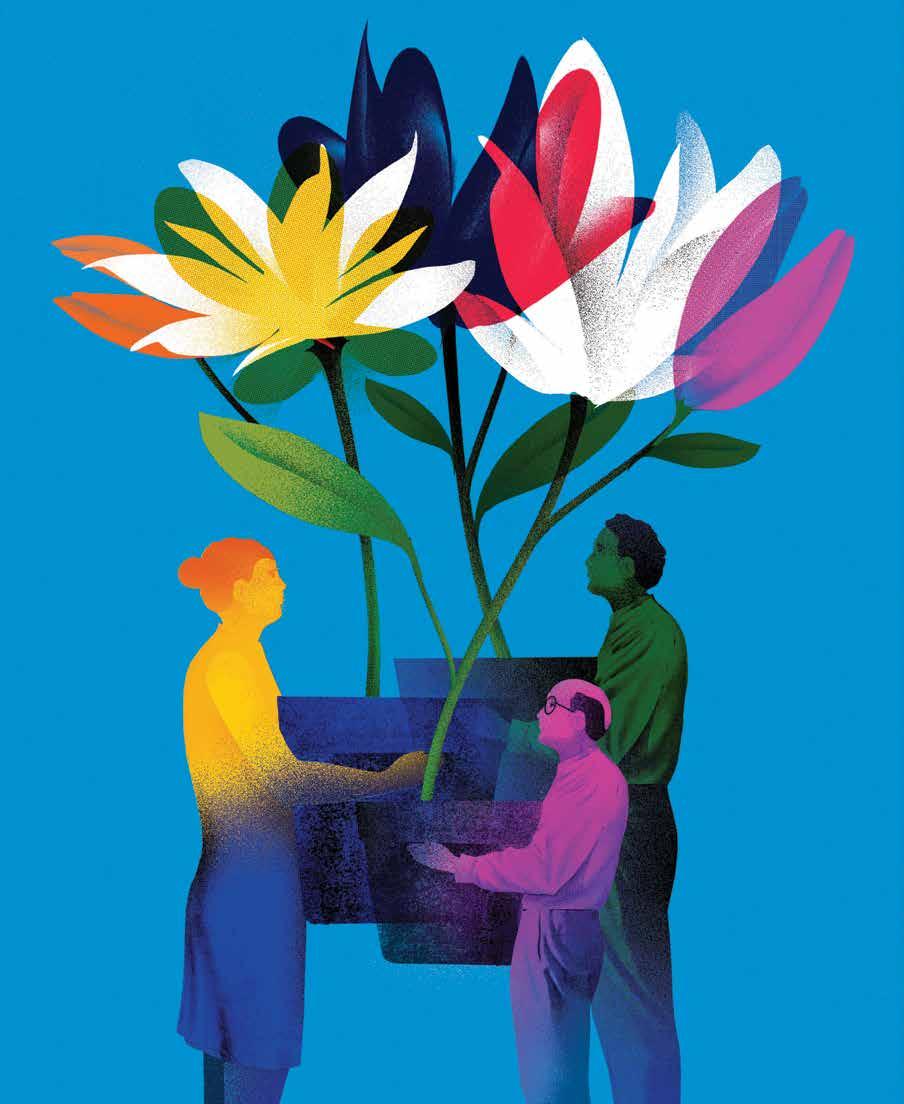
Salt Lake Community College has been awarding Honorary Doctor of Humane Letters degrees to deserving individuals since 1955. The SLCC Board of Trustees selects outstanding individuals in the community who have achieved distinction, made extraordinary contributions to their professional fields and made a meaningful impact in their communities and/or to higher education to receive this honor. The 2020/2021 Honorary Doctorate recipients will be honored and celebrated at SLCC’s 2021 Commencement on Aug. 6, 2021 at the Maverik Center.

Since childhood, Terry L. Grant has had an appreciation for teamwork and other cultures, and as a young man on a mission for his church, he learned to deal with rejection and the importance of knowing one’s strengths and weaknesses.
With those skills, he went to work at ZCMI, where he met his future wife, the late Janet Reese Grant. They wed and the couple moved to Denver, where he began a 35-year banking career, starting as a teller. He graduated from Brigham Young University and then from the Thunderbird School of Global Management with an International MBA. He rose through the banking ranks at Royal Bank of Canada in Toronto and Credit Lyonnais New York, serving large Wall Street firms.
After 9/11, the Grants returned to Utah, where Terry was given opportunities to work for other banks and even start a new one. Five years ago, he became president of the KeyBank Utah Market.
Grant believes in treating people right and fairly, taking risks that move you outside your comfort zone and listening more than you speak. He also believes in giving without expecting anything in return, including in his support of SLCC’s PACE program, which helps high school students navigate a path to college with the aid of scholarships.
“SLCC plays a critical role in our community,” he says.
“Many don’t have educational or economic support systems at home and do not want to go the traditional university route.” The college, he believes, gives students the opportunity to build a firm foundation for life.
Jerry and Edna Taylor
Hard work and a passion for what you do are keys to success for Jerry and Edna Taylor. These principles aided Edna in developing her career and throughout her life. Jerry used these beliefs to build a successful electrical contracting business in Utah.
After a three-year stint in the U.S. Army, Jerry attended SLCC’s forerunner, the Salt Lake Trade Technical Institute. In 1975, one of his first hires was a 21-yearold who had also trained at SLCC, then known as Utah Technical College. The early incarnation of what would become Taylor Electric was just Jerry, his mom as bookkeeper and that first employee.
As he built his company, which eventually grew to employ 350, he would often hire workers trained at SLCC. “The community college has great people. Those are the kinds of workers who make businesses successful. I had good people I could trust,” he says. SLCC instructors got to know Jerry and would call him with recommendations of students to hire. Jerry eventually became involved in judging national skills competitions that involved SLCC students in the trades.
Edna, a graduate of South High School, home to SLCC’s South City Campus today, is still recognized in public as Miss Julie from “Romper Room,” which ran on KSL-TV during the 1970s. “Find your passion, what it is that you love to do that feeds you, not just materially but also your soul,” she says. “That way, you will be successful.”
After passing the Taylor Electric torch to their son Ryan Taylor in 2005, the couple has focused on philanthropy, including donating to SLCC scholarships, assisting many students through the years. Jerry is also a 1989 recipient of SLCC’s Distinguished Alumni Award.
Above: Banking executive Terry L. Grant started his career as a teller.
Below: Jerry and Edna Taylor donate their time and resources to philanthropy.
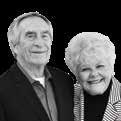
Life’s greatest lessons are not found in success but in adversity. Timothy S. Huval has known both. Success came through hard work to rise to the top of the health insurance industry. Adversity came through a 12-month health crisis and near-death experience.
Huval will discuss lessons learned from this challenge as keynote speaker at SLCC’s Aug. 6 Commencement
connect with others. It was deeply impactful and scary, he says. Huval advocates taking chances to love and be loved, to help each other and not be afraid to receive help. “Don’t wait for a life-altering event to live your life to the fullest,” he says.
Huval graduated from SLCC in 1989 with an associate’s degree in business management and earned a bachelor’s degree in marketing from Weber State University in 1991 and a master’s in public administration from Brigham Young University in 1996. He joined Humana in 2012 as the company’s senior vice president and chief human resource officer, and in 2015, earned the No. 1 spot on Forbes Magazine’s Top 10 Chief Human Resources Officers list. He was named Humana’s chief administrative officer in 2019.
at the Maverik Center in West Valley City. The onetime SLCC student and college administrator, now chief administrative officer at Humana, fell ill in 2018 with a debilitating sickness that confounded medical professionals. He ultimately was in a coma, breathing through a tracheotomy tube with a ventilator, and the worst was feared.
Over the course of nearly a year, Huval rallied and recovered. Through the process, he gained greater appreciation for life and its myriad opportunities to
Huval and his wife, Brenda, have deep roots at SLCC. From 1991-1997, he was director of the college’s Custom Fit Training, Continuing and Community Education Department. In 2007, the college awarded him an Honorary Doctor of Humane Letters degree. In 2015, the college named its South City Campus child care facility the Tim and Brenda Huval Child Care Center and in 2020, the newly expanded student facility at Jordan Campus was named the Tim and Brenda Huval Student Center.
In Huval’s view, SLCC plays a vital role, and he supports the college because of its great value. “Community colleges give students a financial advantage, the opportunity to explore majors, smaller classes, qualified professors and flexible schedules, all while preparing students to be relevant and productive in so many different fields.”
Outside of work, Timothy S. Huval has served on the governing boards of a variety of organizations, including the Utah Information Technology Association; Delaware United Way; Delaware Children’s Museum; United Way of the Virginia Peninsula; Hampton Roads Chamber of Commerce; Hampton Roads Technology Council; and Peninsula Alliance for Economic Development.
“Don't wait for a life-altering event to live your life to the fullest.”

Salt Lake Community College’s prestigious Distinguished Alumni Award honors professional excellence and community service
Christina Andino
You could say Christina Andino is a bit of an overachiever. She graduated from Salt Lake Community College in 2015 with two associate’s degrees, one in social work and the other in general education.

“SLCC was a learning experience for me, both personally and academically,” she says. “As a student, I was navigating the life of adulthood, college and work. I experienced many challenges but was able to overcome them through the compassion and flexibility of professors and mentors.”
After SLCC, Andino earned bachelor’s and master’s degrees in social work from the University of Utah. She now works as a school social worker for the Canyons School District. As a former foster child of five years, Andino relishes her roles working with FosterClub, a national network for foster youth, and as a youth coach for the University of Utah’s First Star Foster Youth Academy.
“Advocacy allows me the privilege to have a voice, and it is my responsibility to use it and be heard,” she says. “As an alumna of the foster system, I have the lived experience and expertise, and I represent, educate, inspire and impact systemic and generalized change.”
Her advice to SLCC graduates is to get connected. “Community is everything you need because others can relate and help you through your experiences. The more involved you are, the more support you will have as you pursue your personal, educational and professional goals.”
Growing up, Davis M. Smith’s family frequently moved when his father’s job of building churches took him to the Caribbean, Dominican Republic, Puerto Rico and Ecuador. Smith worked hard and saved money for college, attending Salt Lake Community College in 19961997 and continuing to BYU and then to the University of Pennsylvania’s Lauder Institute and Wharton School, earning a BA, MA and MBA along the way.
Two individuals played a pivotal role in Smith’s early academic path. While at SLCC, Smith says, marketing education professor (retired) Curtis Youngman’s class “spoke” to him. “I loved learning about brand building, marketing and consumer behavior,” he says. Later in college, he followed entrepreneur Steve Gibson into an elevator and asked to work with him. Smith was surprised when Gibson urged him to become an entrepreneur rather than work for one.
After college, and several successful online ventures, Smith combined his love of travel with a poverty-fighting business model. In 2014, he launched Cotopaxi, named for Ecuador’s Cotopaxi National Park. Today, the fast-growing Salt Lake City-based company manufactures outdoor gear in factories around the world, providing more than 1,000 jobs.
When his business took off, Smith started the Cotopaxi Foundation, which provides dozens of grants in six countries to fund education and employment opportunities.
 Davis M. Smith
Above: Cotopaxi founder Davis M. Smith learned about brand building while studying at SLCC.
Davis M. Smith
Above: Cotopaxi founder Davis M. Smith learned about brand building while studying at SLCC.
Jeremy Tritchler was bored with his job analyzing core earth samples, looking for valuable minerals and then logging the data. He wanted to work with his hands to create and make things from wood.
After taking some classes at Salt Lake Community College from 2014-2016, then more instruction in Boston, Tritchler realized his dream. The former geologist now demonstrates 18th century woodworking at Colonial Williamsburg, the country’s largest living history museum, in Virginia, where he lives with his wife and daughter.

It was his wife, Shaun, who encouraged him to follow his mother’s mantra: “You never know until you try.” He was also inspired by a Pablo Picasso quote: “I am always doing that which I cannot do, in order that I may learn how to do it.” The little boy who once carried around a homemade toolbox that his grandpa helped him build
Tritchler’s hobby of woodworking turned into a passion unleashed. “My wife noticed a change in me,” he says. “I was happier and found more joy in my life. I anxiously looked forward to each class where I could be working in the shop.” He fully committed to making a career change in his third semester after building a gift of a fall-front writing desk for his wife.
SLCC woodworking instructor Chris Gochnour ultimately connected Tritchler to a trade school in Boston and in 2018, he graduated from the North Bennet Street School and stayed on as an adjunct instructor while also working in a small architecture millwork shop in East Boston and taking on private commissions as a member of Boston’s Fort Point Cabinetmakers co-op workshop. Turns out, that little boy with the toolbox would be better than he ever imagined at making things.
Jeremy Tritchler works an old-fashioned wood plane in Colonial Williamsburg. His woodworking journey started with classes at SLCC.
The Teaching Excellence Award is given by the Salt Lake Community College Foundation Board to recognize excellence in professional education at SLCC. Both full-time and adjunct faculty are eligible. The award reflects a cumulative body of teaching excellence rather than just a single year of exemplary work.
Brett Terpstra Assistant Professor Criminal Justice
Before Brett Terpstra began teaching at SLCC, he was a special agent for the U.S. Department of Labor and an intelligence officer for the U.S. Marine Corps. He also taught students to fly helicopters in Salt Lake City. In 2013, he began teaching in the SLCC Aviation Department and in 2017 transitioned to teach criminal justice. Terpstra earned his master’s degree in criminal justice from the John Jay College of Criminal Justice in New York.
When it comes to improving equity, diversity, inclusivity and student success, Terpstra lets students use his feedback to resubmit work for higher grades and also works with them through ungraded activities to crystalize content in their minds. Students who enroll in his courses, say he makes complicated concepts easier and that he works closely with them to ensure every opportunity for success.
Terpstra embraces technology to further his students’ learning and he’s known for using the Padlet web application to post links to all the latest news articles that might be of use to a criminal justice student. He believes student learning is enhanced by connecting course materials to ongoing social events. With police reform in the news, he has incorporated, among other things, discussions on “qualified immunity,” a judicial principle that in some cases grants immunity from civil claims to government officials.
His colleagues describe him as an outstanding professor in every way, including teaching, service and research, and someone who helps other teachers in developing instruction techniques to use in their classrooms.
Jessica Robin Berryman Assistant Professor/Department Coordinator, BiologyField trips she plans, lab research, robust discussions and her sense of humor make Jessica Robin Berryman the embodiment of handson teaching.
It is with good reason that students year after year give her glowing evaluations. She has a passion for biology, and loves learning about the natural world and sharing that knowledge with students. After she earned her master’s in zoology from the University of Hawaii at Manoa, she continued as a teaching assistant there for seven years. She currently teaches six different classes, each with an emphasis on providing undergraduate research that she hopes will be life-changing for students.
Berryman began teaching at SLCC in 2014 and has increased equity in her courses by guiding students to use free course materials through open educational resources and by using highimpact practices, such as flipped courses, to increase participation. “My goal as a teacher is to provide equitable, supportive, empowering and engaging learning experiences,” she says. She prepares students to think critically, be active in their communities, address societal problems and to be environmentally responsible. She strives to know her students’ individual goals and often keeps in touch and helps them after college.
Because many of her students have jobs and families, she is flexible to help them stay enrolled and succeed. She frequently hears students doubt themselves when it comes to understanding science, and she makes it her goal to constantly battle against “imposter syndrome,” feelings of inadequacy in her students, despite evident success.

 Professor
Professor
A man of many talents, Dr. David Pack has taught for 20 years as an adjunct professor at SLCC. He’s a working actor and singer; entrepreneur; certified tennis pro; and certified in CPR and first aid. He earned five associate’s degrees from the college and seven postdoctoral certificates, including from Harvard Business School, Massachusetts Institute of Technology, Oxford University and Stanford University. For nine of the past 10 years, he was awarded Best Adjunct University/College Professor from The Best of State Awards.
On the day in 2019 that Dr. Pack received two of his associate’s degrees, his oldest daughter graduated from SLCC with two degrees, and he sang the national anthem at the college’s Commencement. “Certainly a day to remember,” he says. Dr. Pack has taught at six SLCC campuses, including online, and across two disciplines: communications and fine arts.
Colleagues describe him as unique among faculty, someone who often goes the extra mile, is thoughtful, attentive, dedicated, exemplary and always reliable. Students say he is an important influence, incredibly helpful, proactive, accommodating and very dedicated.
In the classroom, he prefers being a facilitator of discussions rather than a lecturer, to point students in the right direction and allow them to discover for themselves. He tries to ask what he lacks in his teaching, rather than why students don’t get it. Pack believes in volunteerism and has served in more than 30 positions with various community groups and organizations.
NAME: Antonette Gray
WHAT SHE TEACHES: Intro to Criminal Justice; Intro to Corrections; Criminal Law; Criminal Investigations; Intro to Policing; Laws of Evidence; Intro to Victimology

NUMBER OF YEARS TEACHING AT SLCC: Four
UNDERGRADUATE: University of the West Indies (Mona), Jamaica
MASTER'S DEGREE: Monmouth University
DOCTORATE: Capella University (ABD)
WHY WORKING AT SLCC MATTERS: SLCC helps students understand that working together is more beneficial than working alone. In so doing, they build trust with others, which in turn allows them to feel more connected to both their SLCC and individual communities. Students are continuously encouraged to embrace their individual and unique values. They are encouraged to be change agents. SLCC reinforces that change starts from where you are and persons should never minimize their offerings to the social process.
GREATEST PROFESSIONAL CHALLENGE:
My students mean the world to me, and so I struggle to find the balance between allowing them to own their learning and being that consistent form of support for them. This challenge has afforded me opportunities to view pedagogy in a more healthy and balanced way. As a result, I have become more intentional in employing pedagogy that is based on diversity, equity and inclusion. In turn, I find that my challenges have strengthened my teaching modalities where students learn the value in being in charge of their learning.
GREATEST PROFESSIONAL ACCOMPLISHMENT:
It is always a privilege to see students become aware of, acquire and improve upon their critical thinking skills. I enjoy seeing students become more selfdirected, self-disciplined, self-monitored and selfcorrective in their thinking. It is humbling to see students take your feedback and become more transparent with themselves while overcoming egocentrism and sociocentrism.
ADVICE FOR STUDENTS AND OTHERS: “Knowledge is power” and it does not have to begin and end with what you learn and acquire in the classroom. Go out as ambassadors in your communities and use your voices to effectuate change. Never underestimate the value and power of your thoughts and words. Always do the right things for the right reasons. You should choose right, even when no one is watching.

I want to offer my deepest gratitude for your generosity during our first-ever Salt Lake Community College Giving Day on Feb. 17. Over 194 people from the college and the community went “all in” and donated $242,652 toward student scholarships and SLCC programming. We are thankful to everyone who took part in this effort, and your support will allow us to fulfill our mission of providing exceptional education and training to all who are interested.
Many of your donations were matched by various college partners during Giving Day, including Mountain America Credit Union, University Federal Credit Union, and SLCC’s Board of Trustees, Executive Cabinet and Foundation Board. We are grateful for their participation as they helped to deepen the impact of your generosity and made a tremendous difference in what we can provide to our students.
Again, thank you for saying “I’m in” with SLCC. Every day, extraordinary things happen at the college as we fulfill our mission to model inclusive and transformative education. Your support helps students, their families, our community and, ultimately, our nation. Thank you for standing alongside us. Together we will create a bright future for the thousands who learn and train at SLCC.
All the best,
AMOUNT RAISED
$242,652
DONORS
194 total
59 new donors
Deneece G. Huftalin, PhD President


Rebounding after the Pandemic Growth came in unexpected ways for students and graduates.
